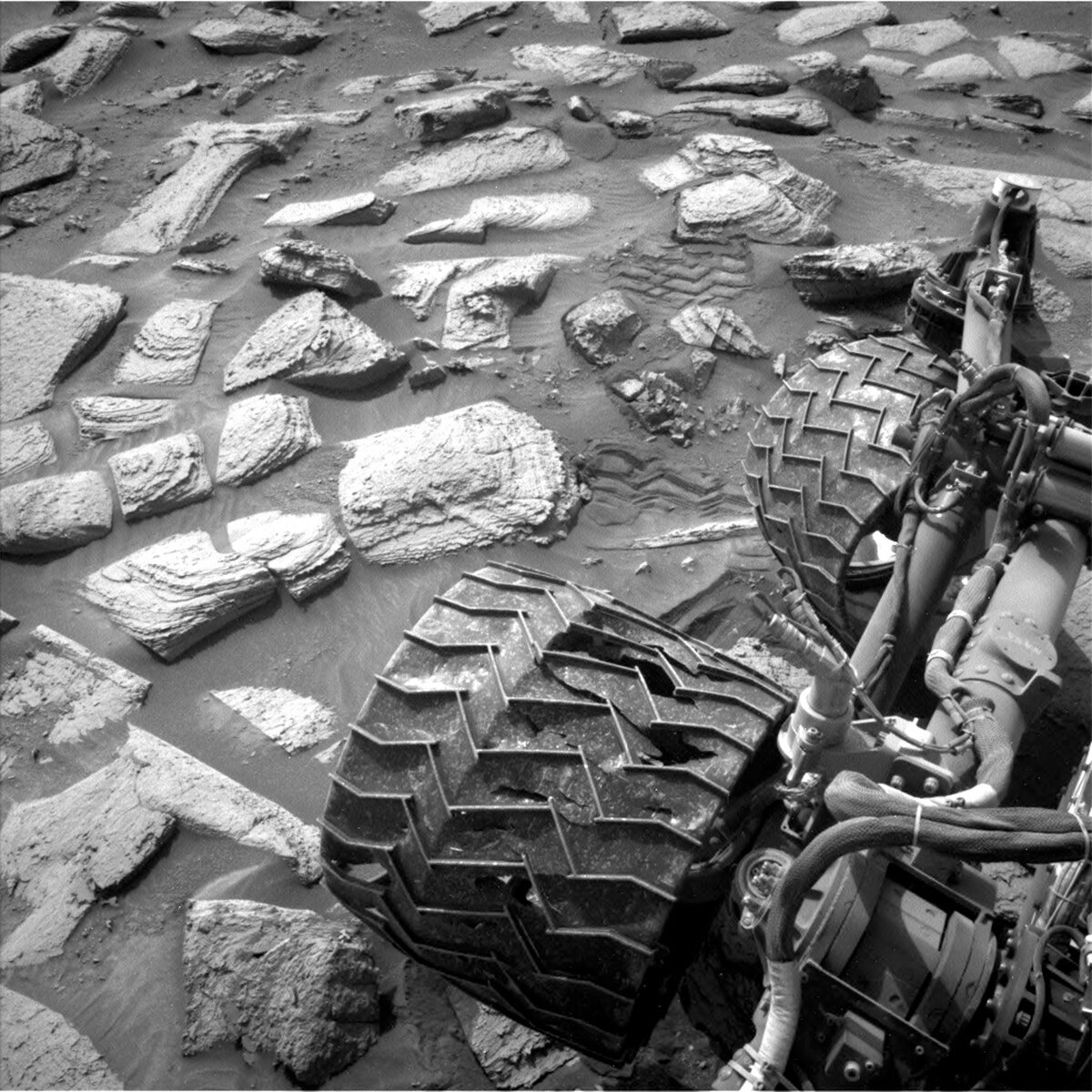NASA's Curiosity hunts for new clues about ancient water on Mars

NASA's Curiosity Mars rover is currently exploring a new region that could reveal more about liquid water that once flowed on the Red Planet. The rover is looking for new clues as it drives along and eventually crosses the Gediz Vallis channel, a winding, snake-like feature that appears to have been carved by an ancient river.
The rover team is searching for evidence that would confirm how this winding formation was carved into the underlying bedrock. The steep sides of the channel suggest that it was not shaped by the wind, leaving scientists to ponder whether the force of water, carrying rocks and sediment, carved this path through the Martian bedrock.
After the channel formed, it was filled with boulders and other debris. The rover team is on the hunt for evidence that may indicate whether they were deposited by watery avalanches or dry landslides.
Since 2014, Curiosity has been ascending the foothills of Mount Sharp, which stands 3 miles (5 kilometers) above the floor of Gale Crater, where the rover landed in August 2012. The journey through Gediz Vallis will be months long and the insights gained could revolutionize our understanding of Mars' geological timeline and the formation of the mountain.
The debris that filled the channel are believed to have originated from higher up the mountain, where Curiosity will never reach, potentially uncovering the types of materials that lie further up the slopes.
"That explanation would be consistent with one of the most surprising discoveries Curiosity has made while driving up Mount Sharp: Water seems to have come and gone in phases, rather than gradually disappearing as the planet grew drier. These cycles can be seen in evidence of mud cracks; shallow, salty lakes; and, directly below the channel, cataclysmic debris flows that piled up to create the sprawling Gediz Vallis ridge," NASA said.
- READ MORE ON:
- Curiosity
- NASA Curiosity Mars rover
- ancient water on Mars
- Gale Crater










